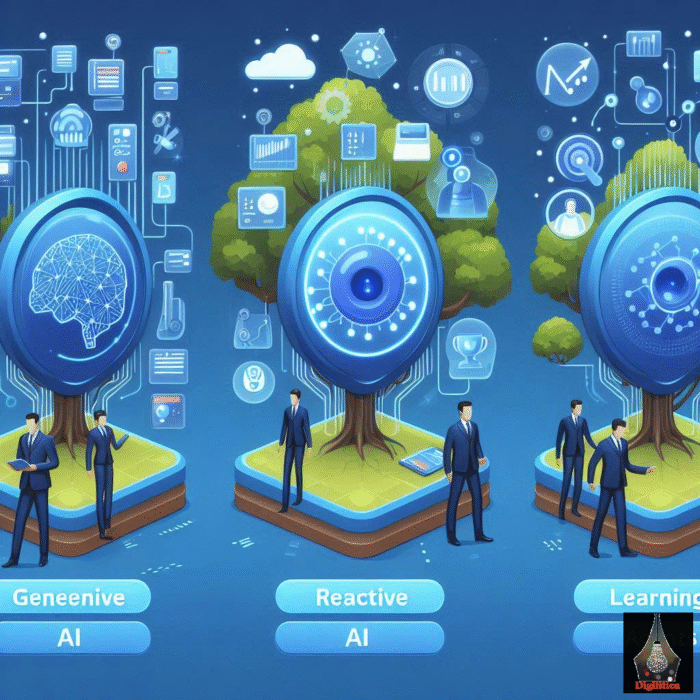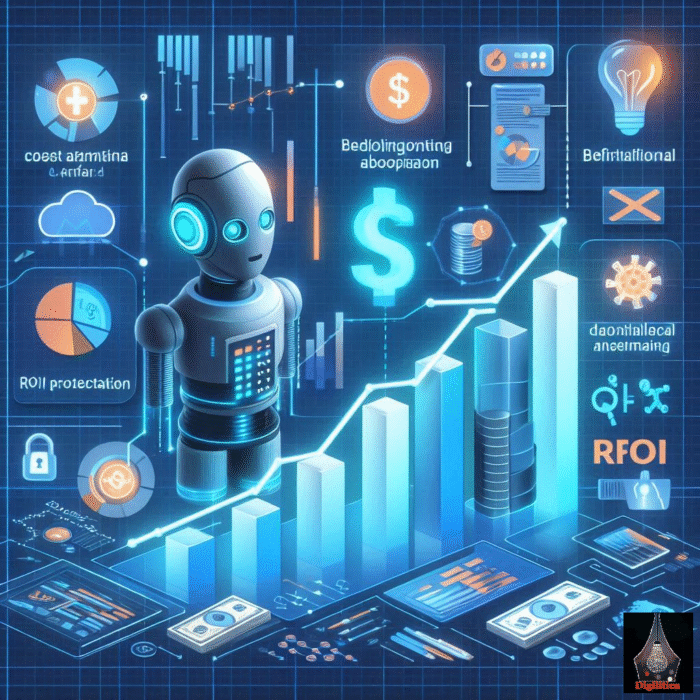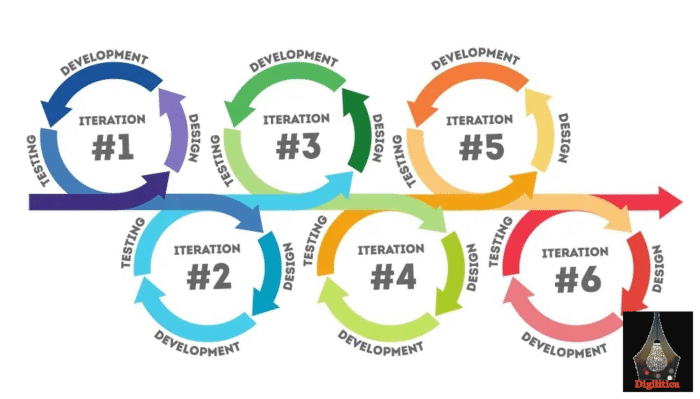Last Updated on May 7, 2025 by Shivanandana Hegde
Contents

Purpose
This guide is designed to help forward-thinking businesses adopt AI agents in digital marketing and analytics. It offers a practical path to implementation with long-term competitive value in mind—not just cost savings or automation hype.
Significance
AI agents are transforming the landscape of digital marketing and analytics. They bring unparalleled power in handling data, enhancing customer interactions, and improving strategic decision-making.
AI agents in digital marketing aren’t just replacing manual work – they’re reshaping decision systems. With their ability to ingest massive datasets, deliver predictive insights, and act autonomously, they’re driving a structural shift in how businesses engage customers and operate campaigns. CMOs and CTOs who embrace this shift early will define the next decade.
Overview
In this guide, I outline a six-stage roadmap for AI adoption—from initial exploration to achieving market leadership with advanced AI integration. Each phase is structured for practical execution, with maximum relevance.
Stage 1: Learning and Experimentation

Exploring the AI Landscape
Start by diving deep into the AI tools available today. Understand what’s out there and how these agents can be applied in marketing and analytics. Begin with deep immersion—map out the evolving ecosystem of AI tools and agent frameworks relevant to marketing, including foundation models, workflow automators, CDP-integrated bots, and plug-and-play AI features in SaaS.
Identify Key Use Cases
Focus on where exactly the AI agents in digital marketing and analytics deliver tangible impact. These might include:
- Customer segmentation and LTV prediction
- Dynamic pricing or offer optimization
- Automated content creation
- Real-time reporting and anomaly detection
Some useful AI Agents examples
- Data enrichment agents (automate CRM intelligence)
- Visualization creators (auto-generate dashboards)
- Cost forecasting agents (predict channel ROI)
Defining the Role: AI vs. Human
Make clear distinctions between AI-driven tasks and those that require human oversight. Understand which decisions AI can handle independently and where human involvement is still crucial.
Avoid vague job-displacement debates. Instead, chart clear swim lanes:
- AI for precision and scale (e.g., content variations at volume)
- Humans for strategy, ethics, and nuance
Understand Agent Taxonomy
Investigate various AI agents:
- Generative AI – Synthesizes content and ideas (e.g., campaign copy, ad variants)
- Reactive AI – Executes rules-based logic quickly (e.g., smart bidding)
- Deliberative AI – Makes calculated trade-offs (e.g., email send-time optimization)
- Learning Agents – Continuously self-improve (e.g., chatbot personalization)
Many of the digital marketing and analytics platform are already bundled with AI and Agentic AI frameworks.
To name a few:
- Salesforce’s Einstein – Predictive customer scoring
- Adobe Sensei – Asset creation and tagging
- MS Dynamics 365 Copilot – Both ERP+CRM workflow orchestration
- Hubspot’s Chatspot AI – GPT-fueled marketing automation
In-house vs. Embedded Agents If you’re building internal maturity, lean into vendor tools early, then gradually design proprietary agents tailored to your funnel dynamics.
Early Cost-Benefit Evaluation
At this stage, perform a basic cost-benefit analysis. While your focus should be on long-term gains, this will help ensure you’re making an informed decision right from the start. Adopting AI agents in digital marketing and analytics is inevitable anyway. So, don’t overanalyze.
Use directional estimates:
- Time saved per campaign
- Headcount hours offset
- Incremental revenue unlocked

Stage 2: ZERO to ONE – Implementing Your First AI Agent
Pick the FIRST Strategic Use Case
Don’t start with “easy wins.” Pick a pain point that matters. For example:
- Personalized product recommendations for your top funnel
- Ad spend optimization across platforms
Validate feasibility, dependencies, and short-term ROI. The AI agents in digital marketing team should do meaningful contribution. The ‘low-hanging fruit‘ is not going to justify the cost and effort of AI agents in digital marketing and analytics.
KPIs and Metrics
Set concrete KPIs to gauge success. Tie outcomes to business levers:
For Example:
- Time-to-market (e.g., content production speed)
- CAC reduction or ROAS lift
- Churn rate improvement
Success and Failure Benchmarks
Establish clear criteria for success or failure. For instance:
- 40% reduction in GTM (go-to-market) time
- 30% reduction in operational costs
- 2x increase in testing velocity

Stage 3: Hold and Evaluate
Track KPIs and Expectations
Assess the real-world performance of your AI agents in digital marketing against your KPIs. Be ruthless. Did the agent hit the KPIs? What did it miss? Why?
Expectation vs. Reality
Look closely at the gaps between what you expected and what you got. Identify both unexpected wins and any unforeseen losses.
Capture Wins and Gaps
- Was there an unexpected uplift in engagement?
- Did it break under edge cases?
- Were users confused by agent outputs?
Tweak, Repeat, or Scale Up?
Evaluate whether to scale the solution or make adjustments and try again. It’s about learning from early iterations to build momentum for broader adoption.

Stage 4: Lay a Strong Foundation
Expand to Multiple AI Agents
Start incorporating multiple AI agents across different use cases from Stage 1. Ensure each agent is properly defined and integrated into its own function. Expand to other functions. Use the validated blueprint from Stage 2.
Enhance Departmental Functions
Deploy AI agents in specific functions like:
- Marketing automation
- Customer service
- Data analytics
- SEO content cluster generation
- Lifecycle email optimization
- NPS-based response agents
Integrate AI into DevOps
Ensure your AI agents work seamlessly within your DevOps processes, improving operational efficiency and streamlining workflows.
Operationalize via DevOps
Embed agents in the CI/CD pipelines:
- Auto-tagging assets post-deployment
- Real-time QA checks
- Alert systems for KPI deviation
Stage 5: Align Business Strategy with AI
Build Synergy Across Teams
By this stage, AI should be woven into your organization’s fabric, from customer-facing functions to backend processes.
Create a Multi-Agent Environment
Encourage collaboration between multiple AI agents to tackle complex challenges and drive innovation across departments.
Enable Inter-Agent Collaboration
Link agents across platforms:
- A performance dashboard agent triggers content rewrites
- A budget forecast agent feeds campaign pacing tools
Integrate AI into Broader Business Strategy
Take AI beyond isolated functions and align it with your organization’s overall business strategy. Use it to boost innovation and streamline operations.
Strategic Integration, Not Tactical Insertion. Frame AI as a strategic driver in boardroom conversations:
- How is AI reshaping our operating model?
- What new capabilities or revenue streams can it unlock?
Stage 6: Lead the Market with AI
Seamless Integration = AI-First Operations
Achieve full internal system integration with AI, creating a well-coordinated, efficient environment that enhances outreach and engagement with clients and customers.
Gain a Competitive Advantage
Leverage your AI capabilities to differentiate your business from competitors and position your organization as an industry leader.
Market Leadership
With advanced AI integration, establish yourself as a dominant force in the market. Use this to build your brand and gain a lasting competitive edge. Share your AI progress transparently. Let the market (and talent) know you’re ahead.

Conclusion
Summary
This guide provides a structured, practical approach to adopting AI agents in digital marketing and analytics from early experimentation to market dominance. It gives a tactical, stage-by-stage view of AI adoption – from tool selection to full strategic integration.
It’s designed for CXOs who want real leverage, not tech showpieces.
The Bottom Line
AI agents are not just tools- they’re transformative assets that offer businesses a strategic edge. The sooner you begin integrating them, the sooner you’ll unlock their potential.
Also, AI agents are not side projects. They’re system shapers. Treat them like you would a senior hire. Define outcomes, test fast, learn faster.
Call to Action
Don’t wait to catch up. Start your AI adoption journey now. Lead—don’t follow—the AI transition.
—
Cheers!
Similar Post:


